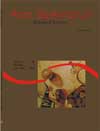<b>Estrutura horizontal e composição florística de três fragmentos secundários na cidade do Rio de Janeiro</b> - DOI: 10.4025/actascibiolsci.v26i4.1525
Resumo
As florestas situadas em áreas urbanas são de reconhecida importância no oferecimento de serviços ambientais à população de seu entorno. O presente trabalho teve como objetivo a caracterização de três fragmentos florestais localizados na cidade do Rio de Janeiro. Para a realização do estudo, foi conduzido um levantamento fitossociológico utilizando o método de parcelas, com unidades de 10 x 10 metros, nas quais foram identificados e medidos todos os indivíduos com PAP (perímetro à altura do peito) igual ou maior que 15 centímetros e altura igual ou superior a três metros. Os resultados encontrados mostraram significativas diferenças de composição florística e estrutura dos fragmentos encontrados, com predomínio das famílias Leguminosae e Moraceae nos dois remanescentes de maior diversidade e de Compositae no de menor diversidade. A maior parte das espécies encontradas pertence a grupos iniciais de sucessão, e a zoocoria foi a principal estratégia de dispersão de sementes encontradaDownloads
DECLARAÇÃO DE ORIGINALIDADE E DIREITOS AUTORAIS
Declaro que o presente artigo é original, não tendo sido submetido à publicação em qualquer outro periódico nacional ou internacional, quer seja em parte ou em sua totalidade.
Os direitos autorais pertencem exclusivamente aos autores. Os direitos de licenciamento utilizados pelo periódico é a licença Creative Commons Attribution 4.0 (CC BY 4.0): são permitidos o compartilhamento (cópia e distribuição do material em qualqer meio ou formato) e adaptação (remix, transformação e criação de material a partir do conteúdo assim licenciado para quaisquer fins, inclusive comerciais.
Recomenda-se a leitura desse link para maiores informações sobre o tema: fornecimento de créditos e referências de forma correta, entre outros detalhes cruciais para uso adequado do material licenciado.












1.png)




3.png)













